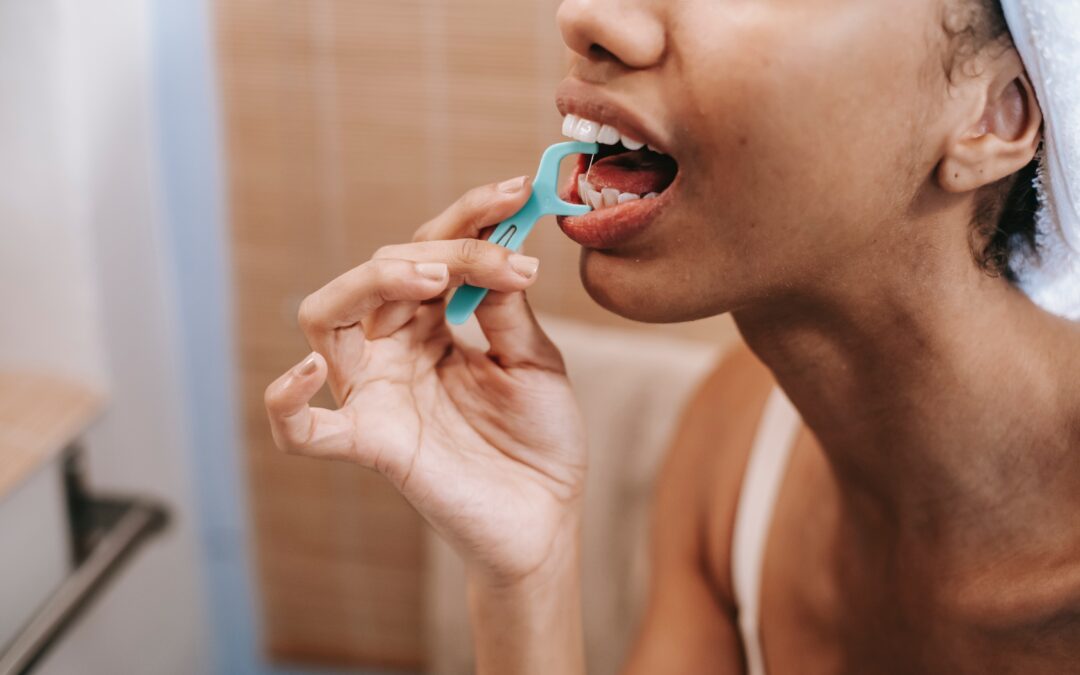Did you know that more than 25% of U.S. adults admitted to being dishonest with their dentists about how often they floss their teeth? This is a pretty startling statistic, and it goes to show that not many people are getting the most out of this simple dental hygiene habit. So, why aren’t more people flossing their teeth? And how can they make flossing a regular part of their oral care routine! Keep reading to find out!
Why Are People Not Flossing Their Teeth?
One of the biggest reasons people don’t floss their teeth is because they don’t know how important it is. Many people brush their teeth twice a day, and they think that’s enough to keep their mouths healthy. But, unfortunately, brushing your teeth only cleans about 60% of your tooth surfaces. That means that there’s still a lot of plaque and bacteria that can build up in your mouth, and flossing is the only way to remove it.
Another reason people don’t floss their teeth is that they find it difficult or time-consuming. However, once you get into the habit of flossing, it only takes a few seconds! And the benefits of flossing are more than worth the effort.
Flossing and Gum Disease
Now that we know why people should floss their teeth, let’s look at how flossing can benefit your oral health. One of the biggest benefits of flossing is that it helps prevent gum disease.
Flossing also helps to freshen your breath. When you don’t floss, food and bacteria can get trapped between your teeth and cause bad breath. However, when you make flossing a regular part of your oral care routine, you can help to keep your breath fresh and clean.
Tips to Make Flossing a Regular Part of Your Oral Care Routine
- Set a daily reminder: Add flossing to your daily to-do list or set a daily reminder on your phone. This will help you make sure that you don’t forget to floss!
- Find a time that works for you: Choose a time of day when you’re more likely to fit flossing into your schedule. For example, you might want to floss after breakfast or before bed.
- Start with one tooth: When you’re first starting out, focus on flossing just one tooth at a time. This will help you get into the habit of flossing without feeling overwhelmed.
- Invest in some good quality floss: Choose a type of floss that you like, and that’s easy to use. This will make it more likely that you’ll enjoy flossing! For example, if you find traditional dental floss difficult to use, try using an electric water flosser instead.
- Find a flossing buddy: Ask a family member or friend to remind you to floss every day.
Step-By-Step Guide to Flossing Your Teeth
To enjoy the benefits of flossing, you have to do it right. Here are 5 easy steps to follow:
I. Start with about 18 inches of dental floss. And wrap it around your middle finger, leaving two inches to work with.
II. Using your thumbs and index fingers, clasp the floss tightly and slide it up and down against your teeth, using a back-and-forth motion. Be careful not to snap the floss into your gums!
III. Use the dental floss to clean under your gumline. Gently curve the floss around each tooth to get rid of any plaque or food stuck there.
IV. Rinse your mouth with water or mouthwash to remove any plaque or food particles you may have missed.
V. Spit the water out into the sink and give yourself a big smile in the mirror!
Note: Don’t forget to floss the backside of your last tooth! Also, use a clean section of floss for each tooth. When you’re finished, throw away the used floss.
As you can see, flossing is quick, easy, and great for your oral health! So, make sure to add it to your daily dental hygiene routine!


